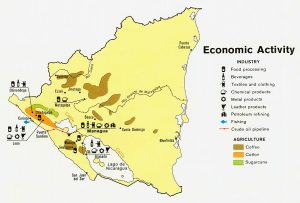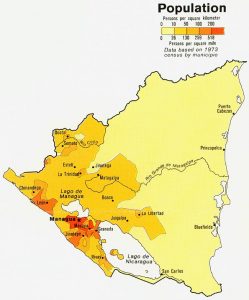
Immigration and Internal Migration
There are several stereotypes that North Americans have about Latin America. One of these being that a majority of people form this region illegally come to the United States or at least try to in order to escape the poverty, violence, and corruption of their home countries. In short they come to the United States for a fighting chance of improving their lives-this is the American Dream.
However, Nicaragua and its inhabitants do not abide by this stereotype. When looking at the nationalities of detained immigrants at the U.S Border, Nicaraguans are a small percentage, a minority, a rarity. And while Nicaragua is often ranked as the poorest country in South America, it is not notorious for violence. This does not mean that Nicaraguans do not immigrate in search for better lives-it just means they are not heading to the United States to do so. Instead they are either migrating within their countries or immigrating south to Costa Rica.
Normally, development in a country leads to a majority of the population relocating themselves to urban cities/sites. This is a result of changes in the industry of agriculture. Specifically, once technology begins to be used in cultivating crops, it reduces the amount of laborers needed to maintain them. Furthermore, landowners are able to produce more rapidly and in greater amounts such that commercial agriculture-producing with intent to sell- replaces subsistence agriculture-producing in order to simply sustain oneself and/or ones’ family. In addition to this, developing countries (a capitalist model especially) centers their industries and other non-agricultural means of production in the cities. This is done in order to dedicate the surrounding lands to commercial agriculture. With large amount of workers, no longer needed in the fields and new industries popping up in the urban areas, the rural population tends to migrate to the cities. However, this is not the case with Nicaragua.
For the most part Nicaraguan migration has not gone from large sums of the population leaving the rural sector and traveling to the urban areas. Instead, it has been more of workers going from one rural area of production to another. Due to this, Nicaraguan migration is very intertwined with their main export crops-two of the most predominant being coffee and cotton; specifically, where and when they are being produced.

Although Nicaragua’s initial development in the late nineteenth century/early twentieth century, did introduce commercial agriculture and lowered the demand for manual intensive labor (through the use of cattle in farming) it did not really begin to industrialize yet and thus there was no sudden demand for workers in an industrial sector. Instead, around this same time, coffee exportation began to grow and thus these jobless and landless workers found jobs producing coffee. It is important to note that more land was dedicated to coffee production in the Pacific region of Nicaragua. To illustrate how intertwined agricultural production and migration truly was, one can look at the city of Matagalpa which in the peak of the ‘coffee cycle’ (1920) held twelve percent of the total population of Nicaragua.
Matagalpa’s population however, also brings up another important point into how a developing Nicaragua was still largely dependent on agriculture. Although Matagalpa held twelve percent of the country’s population it also reveals that Nicaragua was suffering from under population. It is because of this that during this time period its economy not only began allowing more agriculture production, but also began creating new ways to attract people to this industry. For example, the Nicaraguan government would give workers land where they could grow crops to sustain themselves, in exchange for later working on a bigger seasonal crops. Not only did this help sustain their economy, but it also kept a big percentage of the population from migrating to more urban centers.

In the 1950’s, cotton overtook coffee as the number one export crop. However, between this year and 1963, it also became a highly mechanized crop. The only real part of cultivating cotton that demanded manual labor was the picking and as a result this industry too eventually left a large amount of laborers jobless. It was in the early 1960’s as well that the Pacific region of Nicaragua began to lose more and more of its land dedicated to agriculture as it slowly began to become an urban hub. While industries began attracting people to this region, several others were drawn to the Atlantic frontier where land was still dedicated to subsistent agriculture. Throughout the late 1950’s and early 1960’s is when Managua became the main industrial center/city. And it still continues to be to this day.